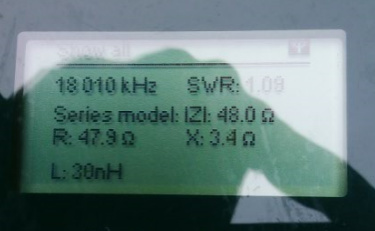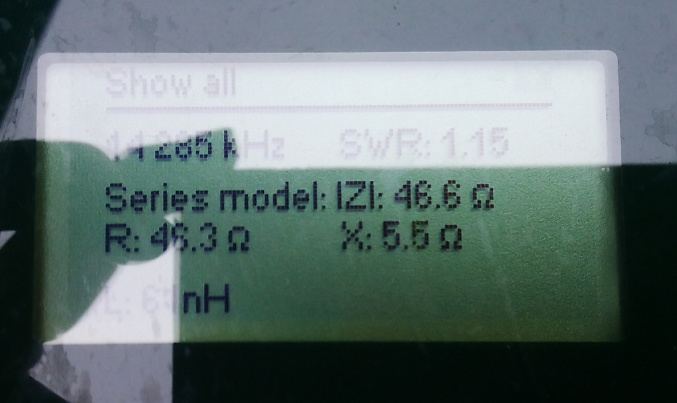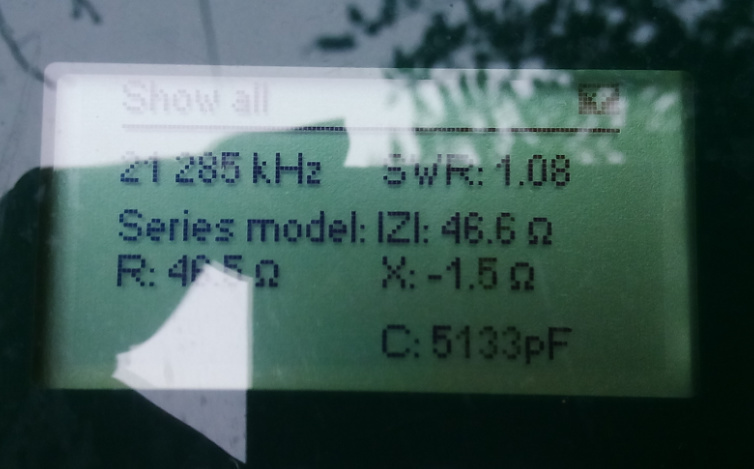After sorting out why my lengths were not as expected (I was using RG-179 coax not RG-174 as I had thought) I have built three J-Poles that are resonant on 15, 17 & 20 metres … “but wait there’s more”.
Following some very annoying occurrences of the DX-Wire 10m mini-mast collapsing on me and it being too heavy, I set my self a “Scope of requirements” list which included using the 6 metre Lambdahalbe mast not the DX-Wire one (the 6m mast is less than half the weight of the 10m mast and shorter to carry). By winding the wire around the mast, it is possible to fit either the 15m or 17m antennas onto the mast. the 20m J-Pole insulated wire element however is too long to fit on the mast. In all three antennas I built the coax feed and stub / T-junction separate from the wire element and have 2mm gold plated RC battery connectors in between to connect them. This was initially done to make packing and assembly / disassembly easier as I can simply coil the coax part and the wire part winds onto a small former.
What to do about the 20m antenna? Perhaps I can run off the excess length from the top of the mast, Inverted-L like and guy it down on a thin cord at a distance? This would be one solution but another idea struck me - why not simply run the excess out at the bottom of the mast at about 1.5 metres high, over onto a walking pole or similar?
This antennas design is single band. the coax assembly is different for each band as is the insulated wire element, however I then looked at what I was thinking of doing for 20 metres and thought well I can do that for 17 metres as well and then just leave the 15m element on the mast and plug in extra lengths of wire element for the other two bands when needed. The major advantage of this approach is that I don’t have to take down the mast, coil-up the antenna and then put the mast up again with a different wire element, every time I want to change bands. Switching the coax assembly for each band is simple as I have theses as separate modules in any case.
The question was, would this 15m plus 17m or 20m extension actually work in practice - electrically apart from the extra connector it should look the same.
Today, I tried this solution and here are the resulting readings from my antenna analyser (sorry for the reflections):
15 metres - 21.285MHz 1.08:1 SWR

17 metres - 18.010 MHz 1.09:1 SWR (a small adjustment still needed on length to bring frequency up)

20 metres - 14.285 MHz 1.15:1 SWR
So you can see, it appears to work and … I have reduced the weight in the process,
Parts now to be packed -
3 RG-174 coax assemblies with short feed cable
1 extension BNC-BNC cable from short link to rig or amplifier.
1 half wave 21MHz insulated 24AWG element
1 short 24 AWG extension for 18MHz
1 short 24 AWG extension for 14 MHz.
and of course the LambdaHalbe 6m portable mast.
Now to try it out on a summit!
73 Ed.


